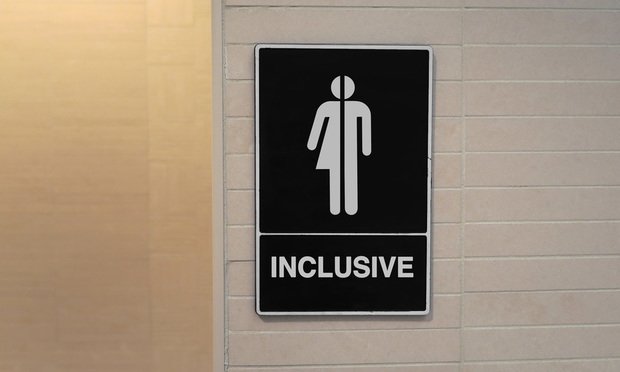Gender-Neutral Bathrooms: Keep Being You
December 14, 2020
On November 15, 2020, Mr. Brandt, the Dean of Students at Hunterdon Central, sent out the following email: “We are opening single-user, gender-neutral restrooms on each campus…anyone can use it, staff or student, at any time.” The email states that, “The best way to think of this restroom is like the restroom you might see in a mall that is typically for a family.” They are often marked with a bathroom sign that contains a male, female, and/or other gendered symbols. The one at our school will “show a traditional male figure, a female figure, and a wheelchair.”
Gender-neutral bathrooms allow anyone of any gender identity to use a singular restroom. Gendered bathrooms have been in the United States since the 1800s, making them almost as old as America itself. Many theories on the origin of gendered bathrooms say they became popular along with the introduction of women into the workplace. As Terry Kogan, a Law Professor at the University of Utah, puts it, “[Ladies’ rooms] were adopted to create this protected haven in this dangerous public realm.” This line of reason is now seen as outdated as women have become more integrated into the workplace and general society.
The main need for gender-neutral bathrooms is for people who do not identify as their traditional male or female gender. In the past, gender was seen as being one of two binaries, male or female, that one was assigned at birth depending on what sex they were born as. Now, gender is seen more like a spectrum that a person chooses their position on, and less as a binary pre-selected choice, hence the term ‘non-binary.’ There are many different gender identities that people go by nowadays. Someone may identify as their given gender, go by new pronouns, or a combination of these. It all depends on what they see best fits their identity. You can read more about these different kinds of identities at this link.
Especially with newer generations, the push for inclusion on a local and federal level has been immense. An example of a push for inclusion is on social media. People have started putting their pronouns in their bios even if they identify as cisgender. This helps to normalize asking for a person’s pronouns instead of assuming them.
A push for inclusion continues within the Hunterdon Central Community. P.U.L.S.E (People Understanding Love Serves Everyone) Club describes themself as “…a club where everyone is welcome – lesbian, gay, bisexual, transgender, questioning, and straight students, as well as those who do not have or need a label for their sexual orientations or gender identities.” The P.U.L.S.E Club “…plays a vital role in making Hunterdon Central safer for our LGBTQ students by providing supportive and accepting spaces, as well as doing broader organizing work against homophobia and transphobia in our school and community.” Even the top of the schools Affirmative Action Statement says “The Hunterdon Central Regional High School District shall provide equal and bias-free access for all pupils to all school facilities, courses, programs, activities, and services, regardless of …sexual orientation…gender.”
Still, there is significant opposition against gender-neutral bathrooms. The main reasons are comfortableness and efficiency. Although these bathrooms will be single-use, many worry that there may be long lines, which can take away from their class time. Those against gender-neutral bathrooms are also worried about having people of different genders and ages in the same bathroom, which could be seen as unsafe to many. According to the University of Washington on this controversy, “The argument most used…against mixed-gender bathrooms was that they would be unsafe…for children. These concerns could be…that children would be at risk of physical harm and…that children would be…exposed to the “other” gender in the bathroom. These concerns were distinctly gendered – in both cases, participants were concerned about the safety of girls.” However, as Mr. Brandt had described in his email, only one person will be allowed in the bathrooms at a time, and there will be a supervisor outside each restroom to enforce that rule.
Even with all of these faults in mind, these bathrooms are still an essential part of progress. As we gain more acceptance towards all people, we must change what we have to fit our future better. The addition of these bathrooms may seem small, but it validates people who live in a society that does not see them as whom they want to be. This is about the integration and normalization of historically oppressed people. Central’s new gender-neutral restroom will be located on the corner by room 148 in the 9/10 building and by room 710 in the 11/12 building.
